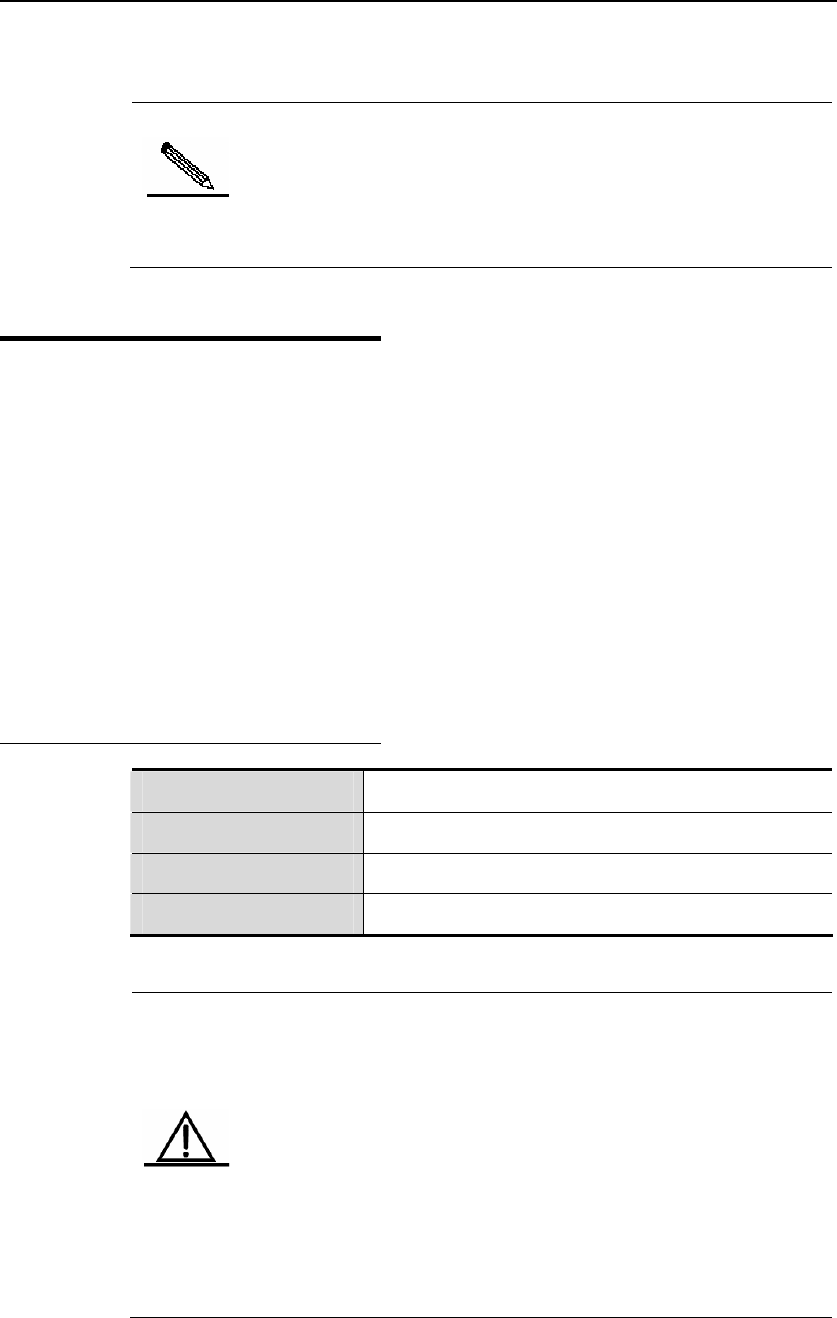
DES-7200 Configuration Guide Chapter 7 RLDP Configuration
7-4
the neighbors. So, it is considered two-way link fault. From the nature of the
fault, the two-way fault actually includes the one-way fault.
Note
If the party at one of the two link ends has not enabled the RLDP,
the diagnosis also shows two-way or one-way link fault. So, in
configuring two-way link detection or one-way link detection, the
administrator shall make sure that the RLDP is enabled at both
ends to avoid the incorrect diagnosis information.
7.2 Configuring RLDP
The following sections describe how to configure RLDP.
z RLDP defaults
z Configure global RLDP
z Configure port RLDP
z Configure RLDP detection interval
z Configure the RLDP maximum detection times
z Restore the RLDP status of the port
7.2.1 RLDP defaults
Global RLDP status DISABLE
Port RLDP status DISABLE
Detection interval 2S
Maximum detection times 3
Caution
The RLDP can be configured only on the basis of the
switching interface (including AP) and the routing interface.
All RLDP frames are untagged.
In the RLDP fault processing type, the block function and the
STP are mutually exclusive. In other words, if the fault
processing type configured on the port is "block", it is
recommended to disable STP; otherwise, since the STP
cannot recognize one-way link, possibly the STP allows port
forwarding but the RLDP is configured with port blocking.


















